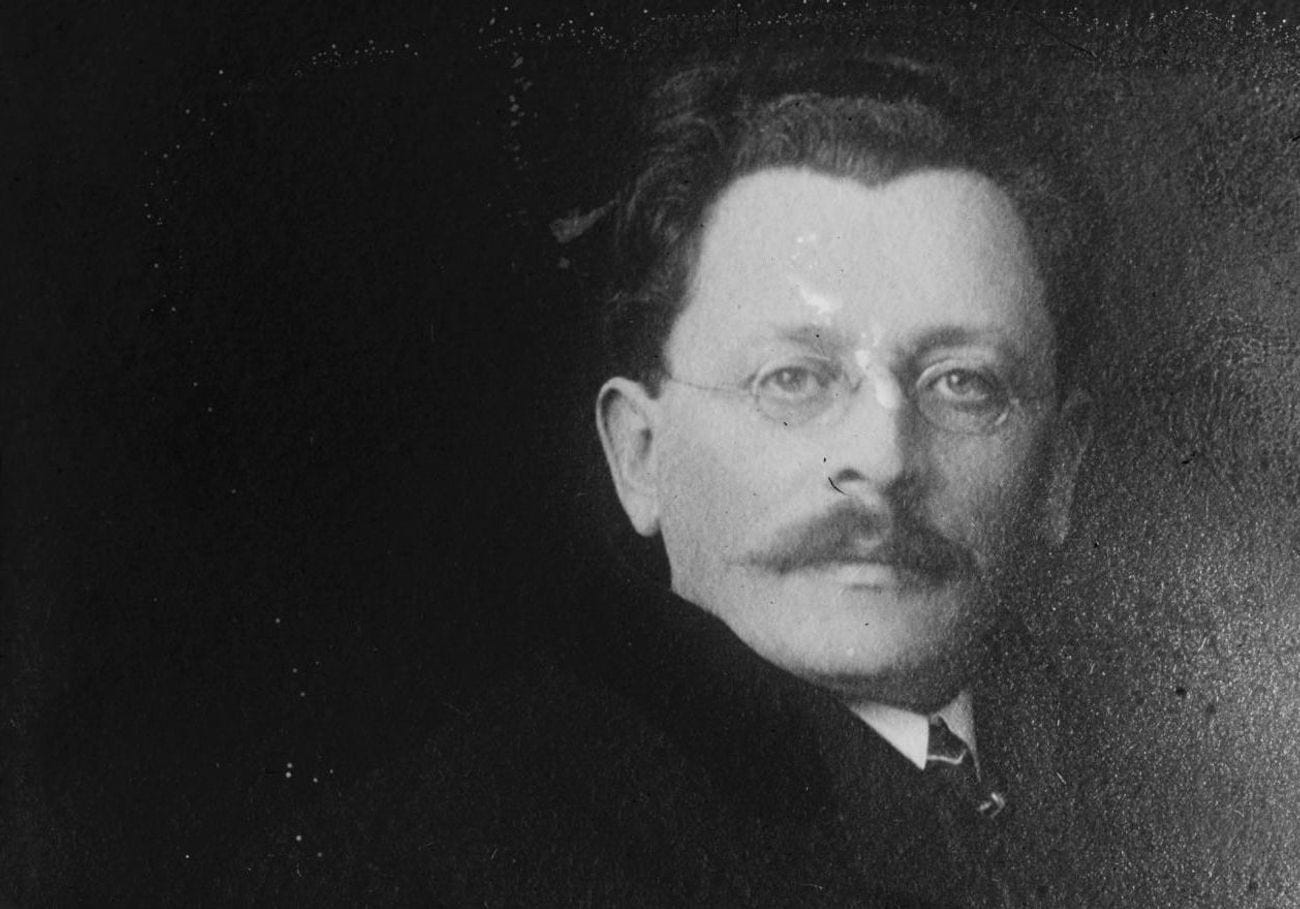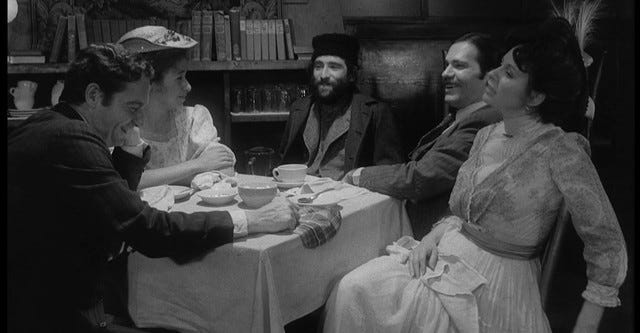Hester Street (1975)

Joan Micklin Silver’s Hester Street is an unlikely movie. Who would have expected, in the middle of the American 1970s, a film adaptation of a novelette published in 1896 by Abraham Cahan, the editor of the Yiddish Forward? Who would have expected a movie that doesn’t play immigrant Jewishness merely for laughs? That doesn’t feature Jewish men lusting after blonde Gentile women, or neurotic families in the suburbs?
Indeed, Micklin Silver found it difficult to get studio backing for a movie that Hollywood executives thought had no audience outside of a synagogue circuit. She made the film with the production company she founded with her husband, on a shoestring budget. They cast relative unknowns like Carol Kane and lowered expenses by, for instance, using one horse for different street scenes and painting the animal different colors.
The literary source, Cahan’s Yekl: A Tale of the New York Ghetto, is about a Jewish immigrant and garment worker on the Lower East Side. Despite his shaky grasp of English and complete isolation from anything of America outside of his poor and overcrowded corner of Manhattan, Yekl considers himself, after several years in America, to be “a regely Yankee,” as Cahan renders the thickly accented mish-mosh of Yiddish and English spoken by his characters. He has long since shaved his beard and taken to American dress. He regales his fellow garment workers with the latest American sports news. And he has given up his Yiddish name for the American version, “Jake.”
Jake is popular with the ladies in the sweatshop he works in, and stumbles into a romance with Mamie, at least partly because she can lend him money. What Mamie does not know is that Jake is married and has a child, though he has not seen his wife or son in three years. He has tried to save up money for their passage to America, but not with as much alacrity as he might. When his wife, Gitl, and son, Yossele, finally appear at Ellis Island, both the distance and lack of distance between the Jake of his American aspirations and the Yekl of his shtetl past become painful realities for all involved.
The brilliance and pathos of Yekl lies to a great extent in its complex and honest depiction of acculturation. Cahan denies neither the gain nor the loss entailed in his protagonist’s still incipient Americanization. Most strikingly, Cahan makes the great marker of this cultural and psychic passage, not Jake’s or Gitl’s arrival at Ellis Island but, rather, their divorce. The divorce ends the novelette, signaling the liberation from old world ties and obligations.
This is a rather ambivalent version of the great American ideal of self-creation. Jake’s tagline throughout the story—“Dot’sh a’ kin’ a man I am!”—is a declaration of such autonomy. Yet when he leaves the rabbi’s house after his divorce, taking the Third Avenue street car to City Hall in order to marry Mamie, he is awash in self-doubt: “Each time the car came to a halt he wished the pause could be prolonged indefinitely; and when it resumed its progress, the violent lurch it gave was accompanied by a corresponding sensation in his heart.”
Cahan was writing for an American readership that could be expected to find immigrant Jews off-puttingly, even frighteningly alien. In Yekl, he steers the American reader from an outsider’s aversion to an understanding of, and sympathy for, the characters, doing so by using different registers of language and alterations of tone and perspective. Micklin Silver enables her audience to bridge a similar sympathetic gulf—though, in her case, the gulf is not between Gentile America and immigrant New York, but rather between the 1970s American present and an obscure or sentimentalized past of ethnic and immigrant roots.
Analogous to Cahan’s shifts between the proper English of the narration and the rendered jargon of the characters, the first scene of Hester Street is wordless, allowing the audience to forge connections with the characters without hearing their broken English. That revelation comes in the following scene, where the bitter joke is how these immigrants consider themselves to be Americanized even as we, the audience, find their accents and attempts at English colloquialism to be quaint.
Micklin Silver’s use of black and white photography, pre-ragtime music, Yiddish with subtitles, and the iconic turn-of-the-century Jewish Lower East Side street scenes all create a sense that we are watching found footage from the 1890s rather than a movie that came out the same year as Dog Day Afternoon. Yet Hester Street is hardly a direct recreation in film of Cahan’s novelette. There are important differences between the two, including scenes nowhere to be found in the source story but that are crucial to the movie’s twentieth-century perspective on what, for Cahan, was the present.
In one such scene, a just-off-the-boat immigrant says the traditional Jewish prayer before taking food or drink. The other characters make fun of him for his greenhorn ways. The irony of the scene is our perspective on the mockers. Their clothes—skirts and corsets, bowler hats, and the like—are for these characters modern and American, but for us are old-fashioned, perhaps gauche. We hear their broken English as a questionable achievement in exchange for the loss of tradition.
Vastly more attentive to the gendered aspects of immigration and acculturation, the film features another scene of especially shocking reality, in which we see Jake with a naked prostitute. Here Micklin Silver punches a hole in what might otherwise be a more pleasantly nostalgic portrait of the Lower East Side. Hester Street is, then, a cultural document, not of the 1890s, but of the 1970s: of second wave feminism, the New Hollywood, and a rethinking of the immigrant generation by its grandchildren and great grandchildren.
In contrast to the source story, Carol Kane’s Gitl, rather than Jake, is the central character of the movie. Cahan describes Gitl when we first see her, as follows:
She was naturally dark of complexion, and the nine or ten days spent at sea had covered her face with a deep bronze, which combined with her prominent cheek bones, inky little eyes, and, above all, the smooth black wig, to lend her resemblance to a squaw.
This hardly describes Kane’s pale features and Van Eyck-esque beauty. The character’s insistence on wearing the wig of married orthodox women, to the exasperation of her husband, is even more vividly portrayed in the movie, dramatized in one of the most powerful scenes in the movie. When Kane’s character finally gives up the wig and decks herself out in American clothes for her husband, the furious Jake (played by Steven Keats) attempts to rip off what he thinks is the hated wig, not realizing it is his wife’s natural hair.
Kane’s Gitl is also given the definitive line at the end of the movie. When her landlady and the rabbi’s wife cluck over her son, Yossele, she gravely corrects them: “His name is Joey.” Implicit in Cahan’s story, but here at center stage, is the realization that Gitl triumphs over Jake at the end because she turns out to be more American than he is: a tougher bargainer, more determined to make her own romantic decisions, and even to ensure that her child is “a real Yankee.”
How far American Jewish culture traveled from the immigrant era is signaled, finally, in the most quietly poignant scene of the movie, nowhere to be found (and hardly imaginable) in Cahan’s story. This is the scene in which the character of Bernstein, the traditionalist foil to Jake’s enthusiastic Americanization, begins to teach little Joey the Hebrew alphabet. To reward Joey, Bernstein drops a piece of candy, “from an angel,” on the page they have read. This is a Jewish tradition dating back to the medieval period, in which children first learning the alphabet are given candy, honey, or sweet cakes, in order to associate learning with sweetness.
For Cahan in the 1890s, the great task for Jewish immigrants was to become American while navigating the social and psychic disorientation of their upheavals. Bernstein teaching Joey the Hebrew alphabet might even have been seen as a waste of time. But in 1975, the majority of American Jews were, as they are today, barely literate in Hebrew, at most just able to sound out words in a prayerbook without knowing what they mean. So, the alphabet scene is touching, and we view the scene through the eyes of an appreciative Gitl.
Cahan’s project of Americanization worked, and Yiddish literacy is even less common than Hebrew literacy among American Jews today. Carol Kane received an Oscar nomination for best actress for Hester Street, but she is better known for her later role as a different immigrant character with a Yiddish accent.
Valerie, the wife of Miracle Max in The Princess Bride is, like her husband, a figure for what Yiddish and immigrant Jewish culture largely became in the American imagination: funny, if decrepit. Yet there remains the occasionally kindled desire of the grandchildren’s generation to listen to those odd-sounding grandparent types, as when Bernstein teaches Joey his Hebrew letters in Hester Street, or when Peter Falk reads to Fred Savage in The Princess Bride.







